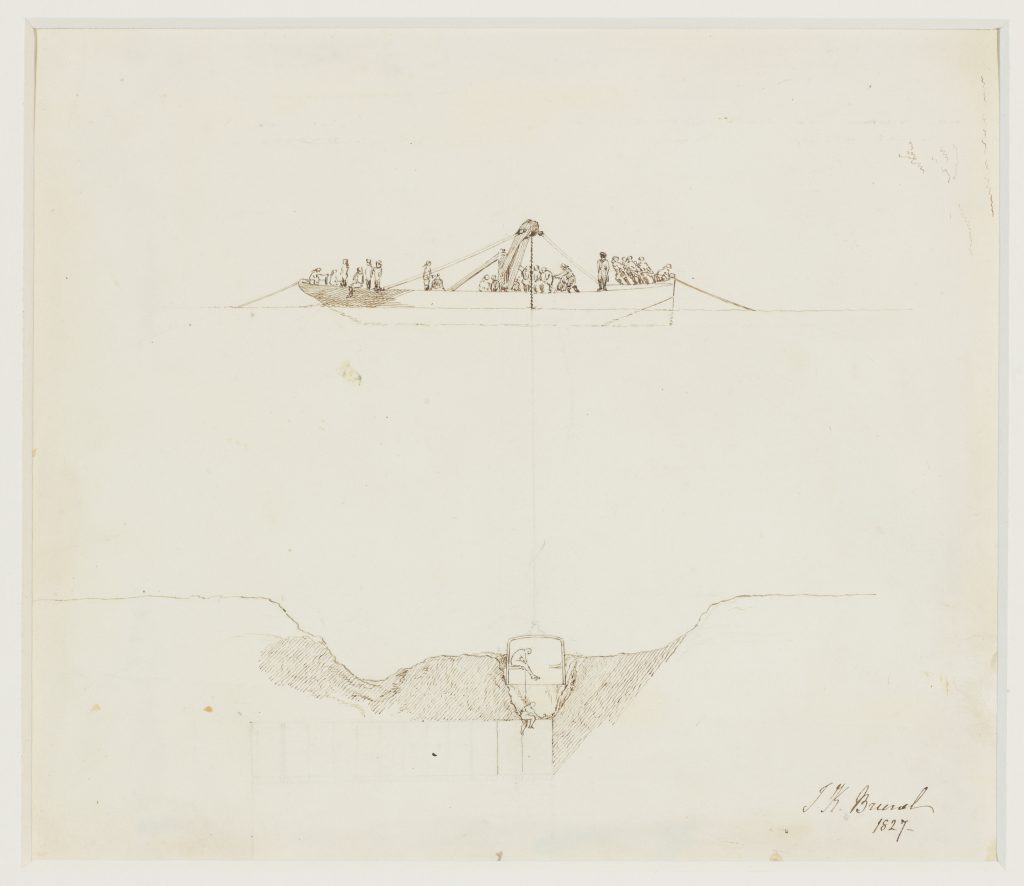This sketch, drawn with pen and ink on wove paper, is signed and dated 1827 by Isambard Kingdom Brunel. It depicts his descent in a diving bell to inspect the damage following the first flood that occurred on the 18 May 1827.
It shows the bell lowered and suspended by a boat crewed by twenty men. Standing tallest is a more intricately drawn figure with a coat and hat. This is presumably Captain Parish who helped Brunel acquire the diving bell. In Richard Beamish’s (Brunel’s resident engineer) memoir, he writes: “After many applications from Brunel to the directors, the hire of a diving-bell was conceded; with the utmost alacrity and kindness, Captain Parish, in authority at the West India Docks, despatched one used by him.” Inside the diving bell are two figures: a man sitting within the bell with a rope attached to the other—Brunel—who is inspecting the damage to the shield.
A more detailed woodcut print of this event appears in Beamish’s memoir. There were several other drawings of the first flood, including LDBRU:2017.17, which shows the flood with a longitudinal section of the tunnel, LDBRU:2017.16, which shows it in cross-section, and LDBRU:2017.24, which was reproduced in many of the Tunnel’s guide books.
The first of five major floods, the incident on the 18 May 1827 was a key event in the Tunnel’s history for several reasons. At 548 feet in length, the Tunnel had met a cavity believed to have been caused by dredging and worsened by the anchors of a series of collier boats the previous day. In the weeks preceding the flood, stones, coal, bones, glass and china had been entering the Tunnel, but it was on 18 May that the cavity filled with tidal dirt and debris gave way and rushed into the Tunnel.
If you’d like a print of the artwork displayed above, you can purchase one from the ArtUK online shop.

